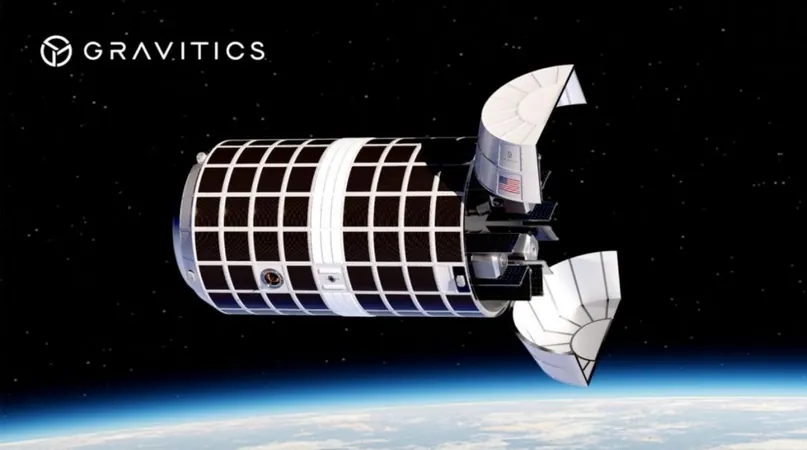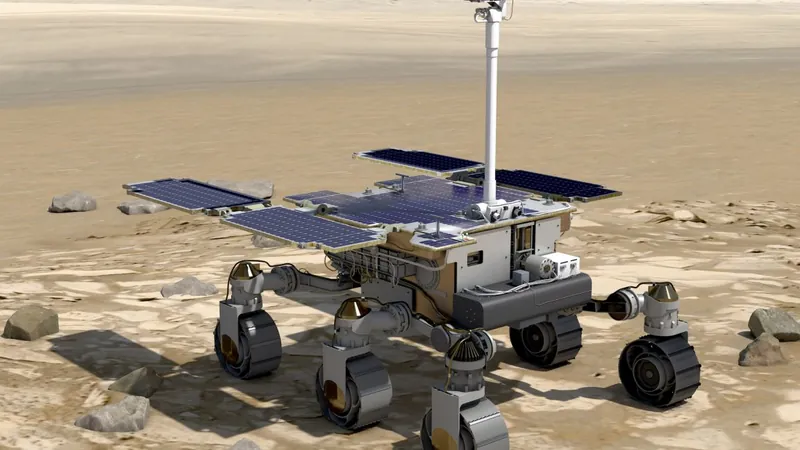
Groundbreaking $60 Million Space Carrier Project Set to Revolutionize Orbital Defense
2025-03-26
Author: Ling
In a major leap toward enhancing national security in outer space, a newly funded initiative led by the company Gravitics aims to develop an innovative “orbital carrier” for the U.S. Space Force. With a substantial $60 million grant from the federal government, this concept could transform how the military responds to potential threats in space.
Over the past few years, the U.S. military has emphasized the concept of tactically responsive launch systems. This capability allows rapid deployment of satellites in response to imminent threats, such as the destruction of a vital national defense satellite by adversarial forces. The importance of this was showcased during the Space Force’s "Victus Nox" test flight with Firefly’s Alpha rocket in 2023, which demonstrated swift satellite launch capabilities within a remarkable 27-hour timeframe.
The Vision of an Orbital Carrier
Gravitics, a Seattle-based space company founded in 2021, is at the forefront of this pioneering venture. According to Jon Goff, the company's director of advanced concepts, the orbital carrier functions similarly to an aircraft carrier, but in space. With specifics about the carrier remaining under wraps due to security protocols, the general concept involves an unpressurized module that houses multiple satellites in orbit, ready to be deployed as needed.
This orbital carrier’s design aims to protect satellites from the harsh realities of the space environment, including extreme temperature fluctuations and radiation exposure. By providing a shielded environment, the carrier would extend the operational lifespan of delicate satellite systems, ensuring they remain functional for longer durations.
The Future of Space Habitability
Gravitics is not only focused on defense applications but also envisions creating large structures in space that can support human habitation. The company's initial focus is a four-meter diameter module capable of providing power and pressurized living space. Collaborations are already in place with commercial entities like Axiom Space, signaling the company's ambition to expand its role in both commercial and defense sectors.
Colin Doughan, CEO of Gravitics, elaborates on their broad vision for “space superiority.” He believes that the orbital carrier can serve dual purposes: enhancing military capabilities while also providing logistical support and expanding human presence in space through pressurized habitats.
In addition to the orbital carrier, Gravitics is developing a larger module named "StarMax," with a diameter of 7.6 meters, intended to significantly enhance operational capabilities in orbit. This module could potentially provide around 400 cubic meters of pressurized space—40% the size of the International Space Station.
The Countdown to Demonstration
A demonstration mission for this cutting-edge orbital carrier could occur as early as 2026, although specific timelines remain undisclosed as the project progresses. As nations increasingly recognize the strategic importance of space, initiatives like Gravitics’ orbital carrier may redefine defense strategies and foster a more robust presence in the final frontier.
In summary, as the U.S. Space Force embraces innovative technologies, we stand on the brink of a new era in space operations, where rapid response capabilities could significantly impact national security, commercial endeavors, and the future of human life beyond Earth. Stay tuned for more updates on this thrilling space initiative!




 Brasil (PT)
Brasil (PT)
 Canada (EN)
Canada (EN)
 Chile (ES)
Chile (ES)
 Česko (CS)
Česko (CS)
 대한민국 (KO)
대한민국 (KO)
 España (ES)
España (ES)
 France (FR)
France (FR)
 Hong Kong (EN)
Hong Kong (EN)
 Italia (IT)
Italia (IT)
 日本 (JA)
日本 (JA)
 Magyarország (HU)
Magyarország (HU)
 Norge (NO)
Norge (NO)
 Polska (PL)
Polska (PL)
 Schweiz (DE)
Schweiz (DE)
 Singapore (EN)
Singapore (EN)
 Sverige (SV)
Sverige (SV)
 Suomi (FI)
Suomi (FI)
 Türkiye (TR)
Türkiye (TR)
 الإمارات العربية المتحدة (AR)
الإمارات العربية المتحدة (AR)